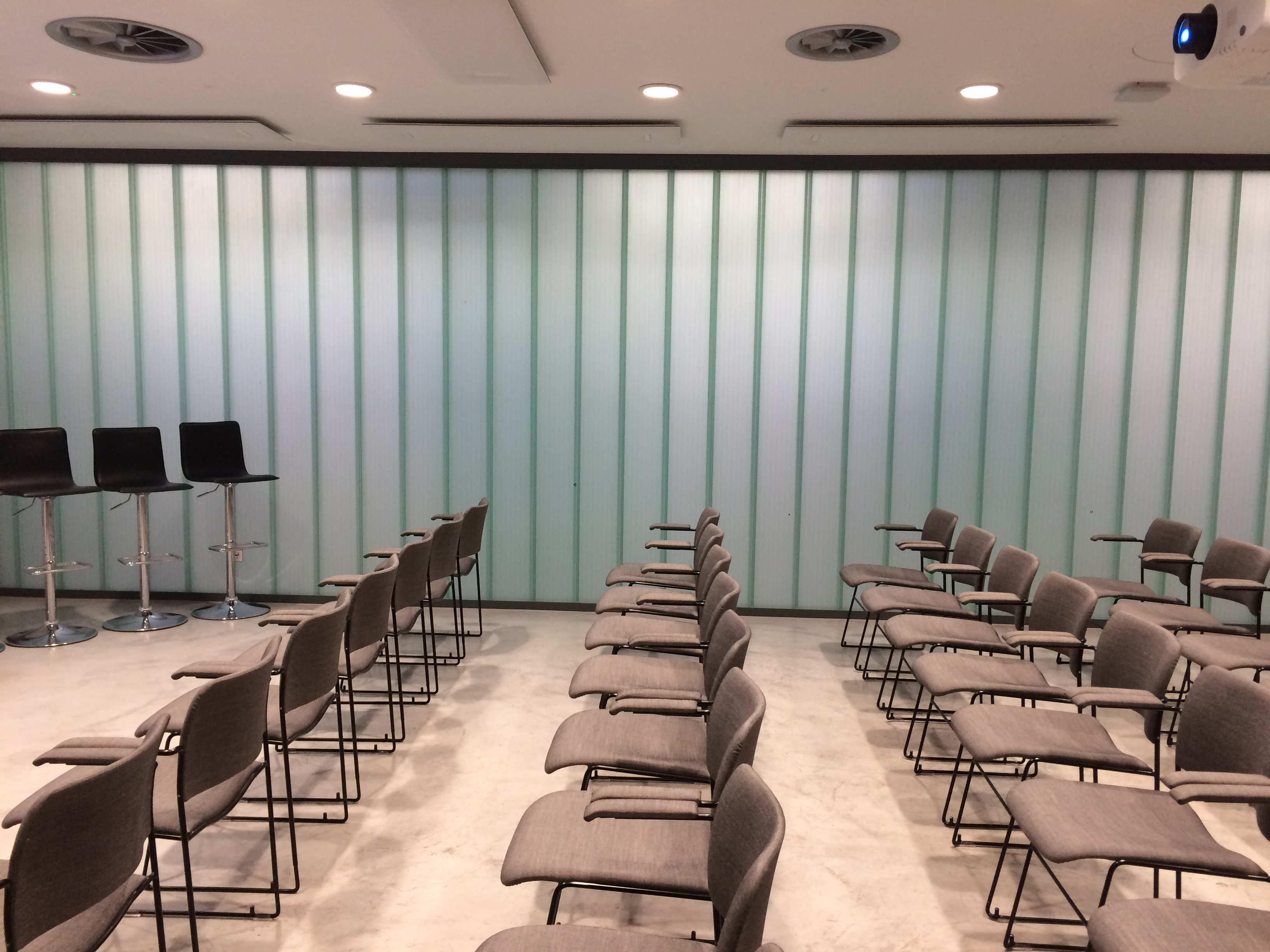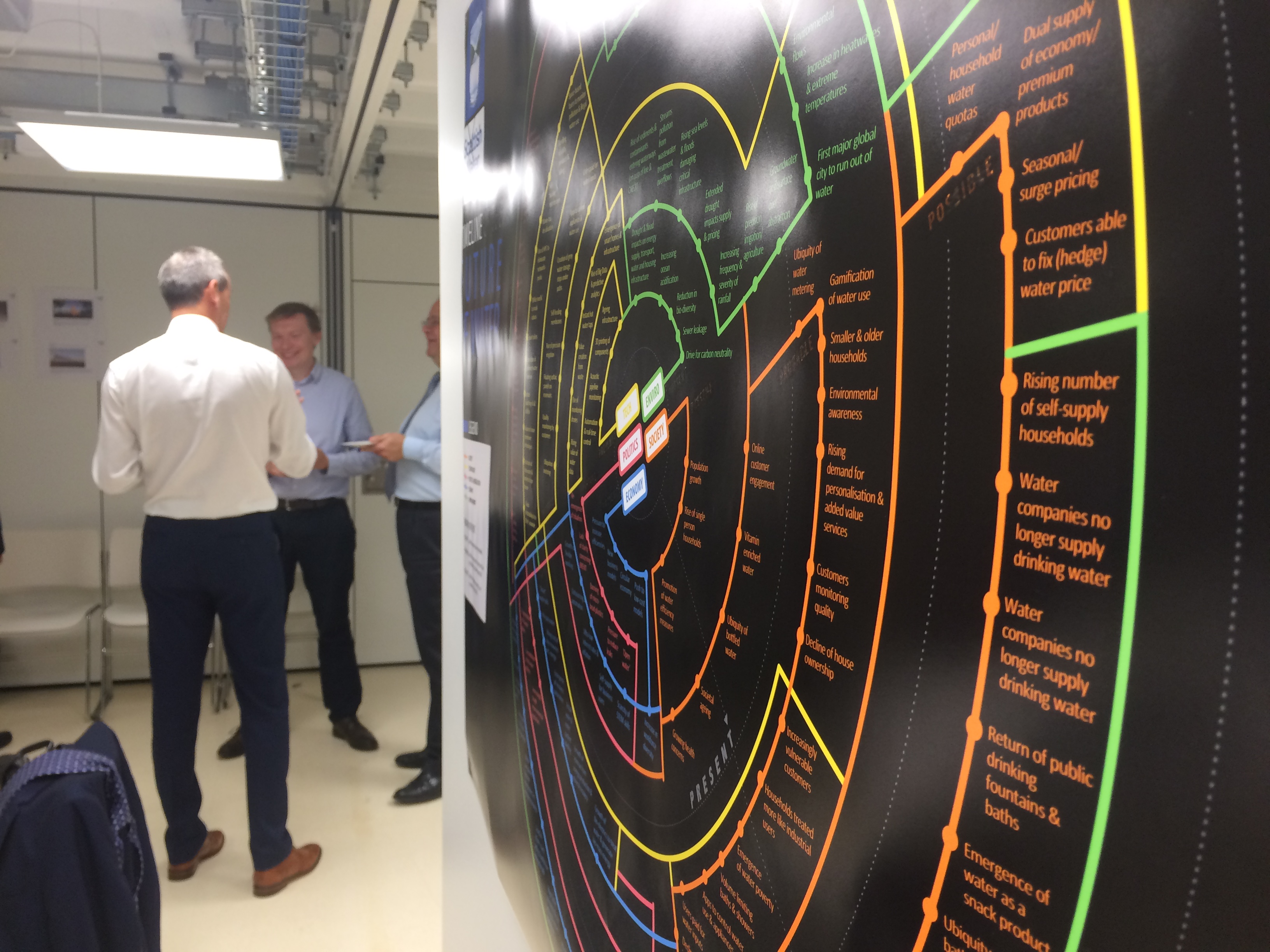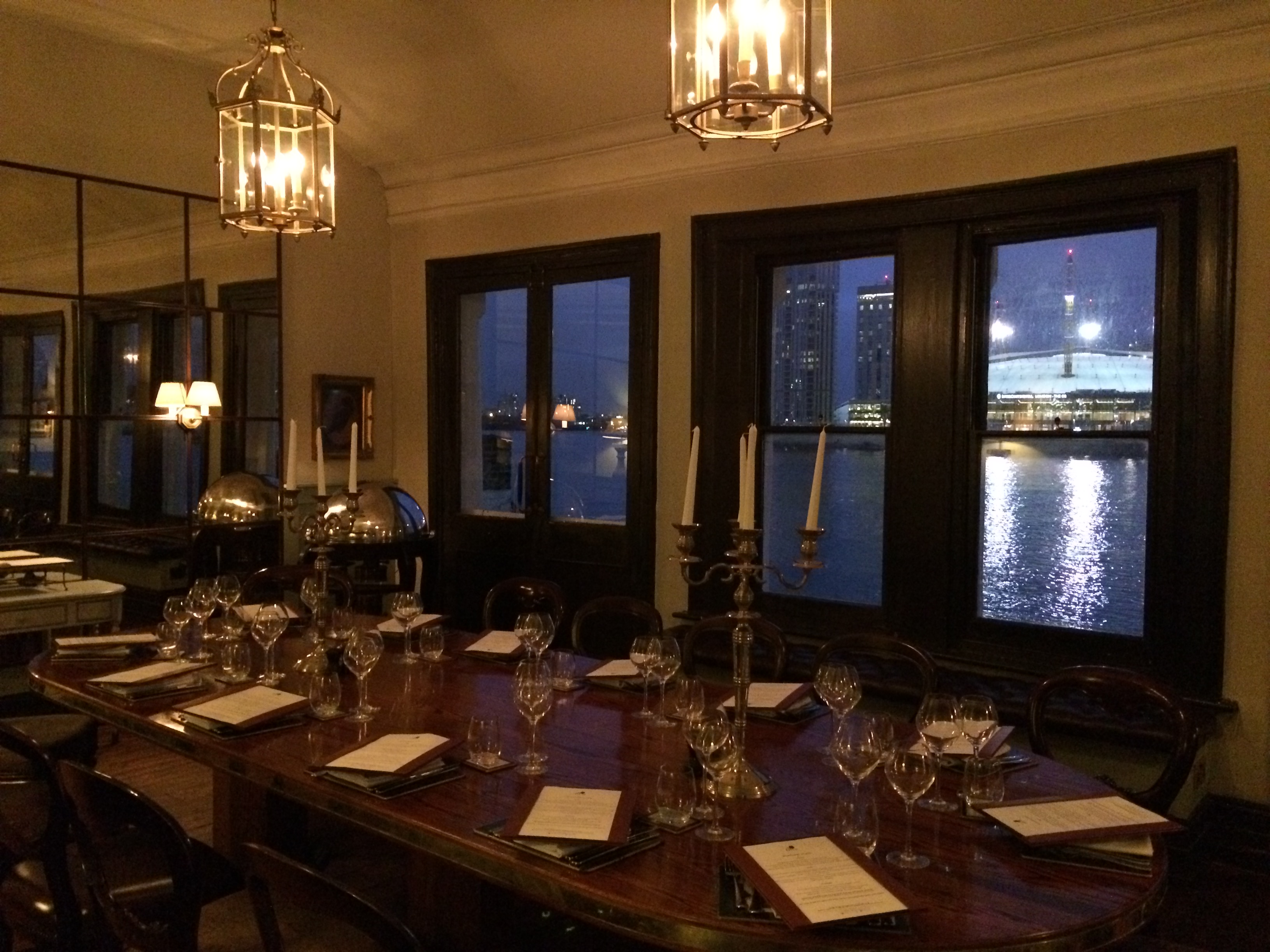I’m getting more and more interested in how physical environments influence how people think. I see this every other week doing talks, sometimes in good venues, sometimes in bad. I also get to see the impact of different types of physical space on workshop outputs on a fairly regualr basis. Takeaway? Not enough thought (or budget) is given to where people think, both individually and collectively.
Some recent examples:
 Picture 1 (above): Windowless training room inside a company in the Middle East. Perfectly standard room, nothing wrong with it in a sense. But in no way inspirational.
Picture 1 (above): Windowless training room inside a company in the Middle East. Perfectly standard room, nothing wrong with it in a sense. But in no way inspirational.
Picture 2 (below): Same building, but the view from a rest area 10 metres outside the training room. An expansive view seems to open the minds of people to future possibilities in my experience.
Picture 3 (below): Windowless basement at a panel discussion that I attended for some architects of all people. You’d think these, of all people, might be thinking about this.
Picture 4 (below): A view, natural light and fresh air at Imperial College. Decor a bit old fashioned, but I’ve seen far worse.
Picture 5 (below): Another basement (at Imperial College). I’m still not a fan of basements, but this one worked quite well because of natural light simulation that changed by time of day. The colour white can work well too.
Picture 6 (below): This was a great venue. A private room in an historic pub close to Canary Wharf. Water again!
Maddest venue? I once organised a workshop on a boat (HMS President on the River Thames). It worked a treat, partly, I think, because we weren’t on land, but we weren’t really on the water either (it didn’t go anywhere). There was movement (the river plus the tide) and a slight rocking motion, although that might have been the wine. Weird, but it worked.
PS…always use tables with round edges. Never square tables!






